T-1 Over Two or Four wires for Long
Distance
- Extend T1 or E1 over 1 or 2-pair wires
- Extend up to 8 miles, depending on wire gauge and
number of pairs
- Setup via front panel or serial console port
- DTE interface options in addition to T1 are V.35,
EIA530, X.21, RS449
- Line rates up to 2056 Kbps
- Uses industry standard G.shdsl line format
- Each unit can be set as master or slave
- A 16-unit mount chassis is available
- Each rack card shares a controller card with front
panel keys and 2-line by 40 character LCD display, with optional Ethernet,
SNMP, and telnet
|
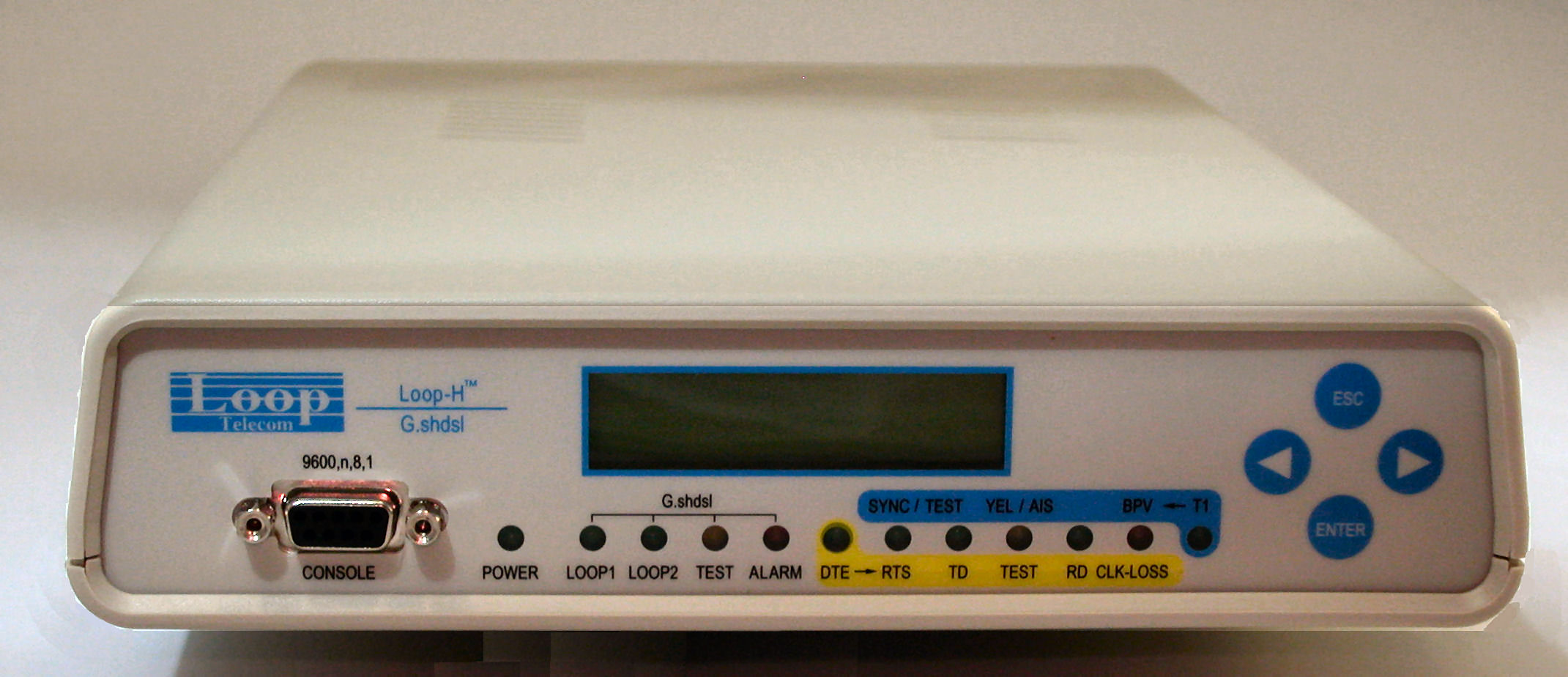
Standalone Version Front View
|
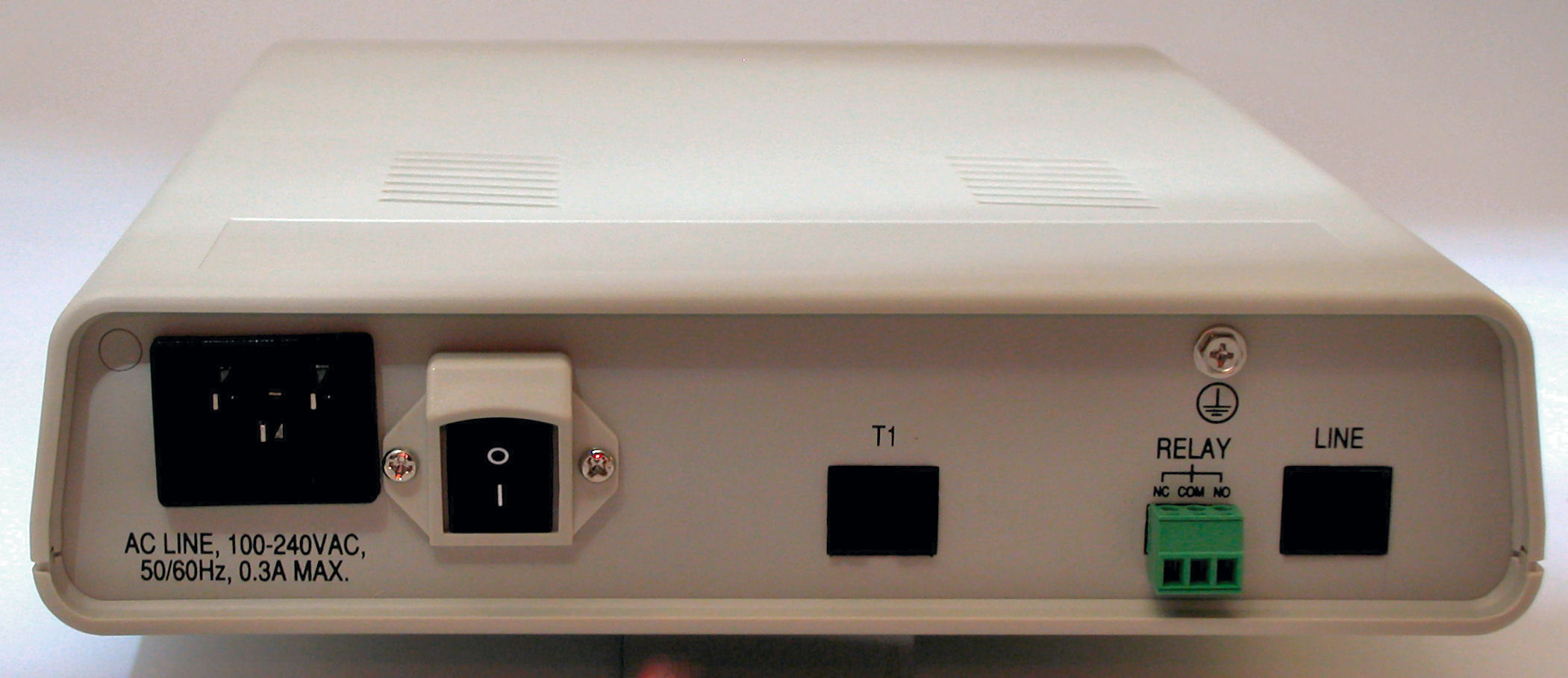
Standalone Version Rear View |
FEATURES
- Extend T1 or E1 over 1 or 2-pair wires
- Extend 2 miles to 8 miles, depending on wire gauge
- Setup via front panel or serial console port
- DTE interface options in addition to T1 are V.35,
EIA530, X.21, RS449
- Line rates up to 2056 Kbps
- Uses industry standard G.shdsl line format
- Each unit can be set as master or slave
- A 16-unit mount chassis is available
- Each rack card shares a controller card with front
panel keys and 2-line by 40 character LCD display, with optional Ethernet,
SNMP, and telnet
see
Manual PDF and
H-3300_Quick_Start_Guide.pdf
The H3300 provides high speed digital transport over
one or two twisted copper pairs using G.shdsl technology. Versatility of this
series comes from a choice of digital interfaces and a choice of data rates,
with the lower data rates applicable to longer reaches.
The H3300 is ideal for extending the T1/E1
demarcs on a campus, in a shopping mall, in a large building. It can use twisted
phone pairs or Cat5 cable. One pair or two pair can be used. Two pairs offer
greater distance. See the distance chart under specifications.
The H3300 is very easy to install. One unit is
set as master, the other as slave. Only the master needs to be set. The H3300
makes it very simple to extend a T1/E1 demarc or install a local bridge or
router.
A rack version is available for central office or
central site use, while a stand alone version is intended for customer premises
installation. Either version, installed in pairs, can provide: 1) a T1/E1 link,
2) a high speed data link with DTE interfaces, or 3) a data access to T1/E1 with
DTE interface at one end and T1/E1 at the other.
For larger systems using a rack version with the
shared common controller card, the H3300 supports configuration and diagnostics
using keypads and LCD display on the front panel, or from a local or remote
terminal. This enables users to execute in-service diagnostics and fault
isolation.
Applications
Loop-H 3300 must be used in pairs. One is configured as master, and the other
slave. The master unit is usually located in central offices and is usually a
rack-mounted model. The slave unit is usually located atcustomer's premises and
is usually a stand-alone model. Both the LCD version of the stand-alone model
and the rack-mounted model can be configured as either master or slave.
The
Loop-H 3300 application examples are illustrated in Figure 1-1. This application
essentially replaces existing or planned requirements where E1 lines are
normally used. The E1 line repeater requirements and the copper conditioning
requirements are considerably eased. The result is significant savings in loop
plant cost when compared to E1 technology. A similar application for T1
transport is also possible.
In
the next example (b), a pair of Loop-H 3300 has V.35 interfaces. In the top
example (a) which is not applicable to this Loop-H 3300 DTE model of Figure 1-2.
They are connected by a single pair of twisted copper wires, the 16PAM line.
This application provides high-speed data transport over twisted copper wires.
The spanning distances are longer for rates 768 Kbps and below. If the speed is
above 768 Kbps, two pairs are necessary.
In
the bottom example (c) and (d) of Figure 1-1, one unit of a pair of Loop-H 3300
is equipped with a V.35 interface and the other with an E1 interface. This
allows remote data access to an E1 network. The data rates can be n*64 Kbps
where n can be 1 to 32. If n are less than 31, fractional E1 services is
provided. Depending on n, and depending on line speed one or two pairs of 16PAM
lines are needed to interconnect the two Loop-H 3300 units.
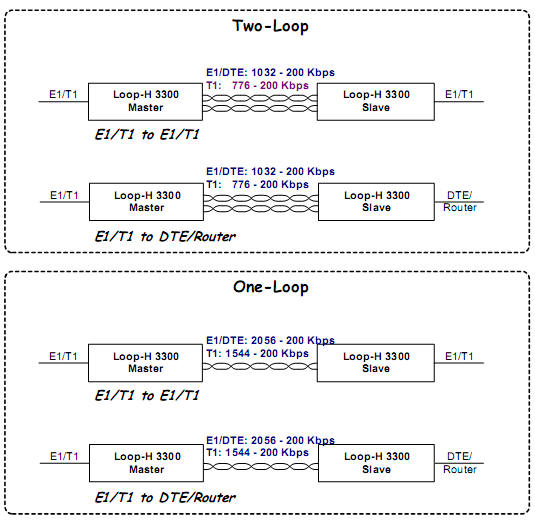
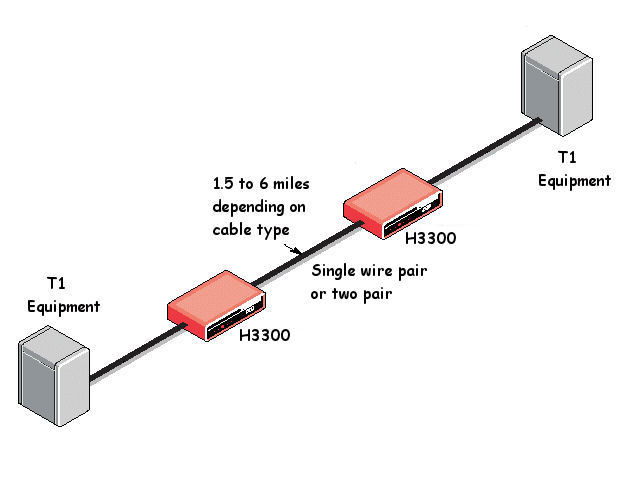
see
Manual PDF and
H-3300_Quick_Start_Guide.pdf
- G.shdsl transport betwen H3300 units
- T1 user interface, E1 120 or 75 ohm are also
available
- Other special order interfaces: RS232, RS530, V.35,
X.21, Ethernet Bridge, Ethernet Router
Port Specifications
- Connectors:
- Front panel DE-9 console port
- Rear panel
- RJ45 for G.shdsl
- User Interface:
- Rear panel RJ45 for T1, 120 ohm E1,
- BNC for 75 ohm E1,
- DB25 for V.35,
- M34 for V.35,
- DB25 for RS530, RS232
- DA-15 for X.21
- RJ45 LAN for Bridge or Router
Front Panel
Controls/Indicators
- Left arrow, Right arrow, ESC, ENTER
- LCD: 2-line by 40-character
- G.shdsl LEDs: Power, Loop1 status, Loop2 status,
Test, Alarm
- DTE Interface LEDs: RTS, TD, Test, RD, Clock Loss
- T1 Interface LEDs: Sync, Test, Yel, AIS, BPV
- 8 1/2 x 2 1/8 x 11 1/4 in (215 x 55 x 285 mm)
- 7 Watts maximum
- 100-240 VAC standard, 20-60 VDC optional
- Operating temperature: 0 to +50 C, non-condensing
relative humidity
The distances achievable with 16PAM technology are
dependent of the wire size and operating environment. The following table should
be used only as a rough guide. The actual distance depends on many environmental
factors. Maximum is for no noise. Typical is with 0dB ETSI noise.
By laws of physics, G.SHDSL should reach about 20%
longer than HDSL. Some say 40%, that is if you are lucky.
Because of the different modulation method, G.SHDSL
has a lower frequency band. Loss of copper cable is proportional to the square
root of the frequency. Thus if you half the frequency, you get 1.414 times the
distance. G.SHDSL is about 40% lower in frequency compared to HDSL, thus has
only 20% more reach.
The distance you can reach is determined not by loss
alone. Cross-talk also plays an important part. Thus if you avoid the
frequencies where cross-talk noise is present, you can also reach longer
distances. Cross-talk is proportional to frequency. Therefore, if you reduce the
frequency by 40%, by cross-talk consideration alone you get 40% more reach.
Nothing is quite so simple.
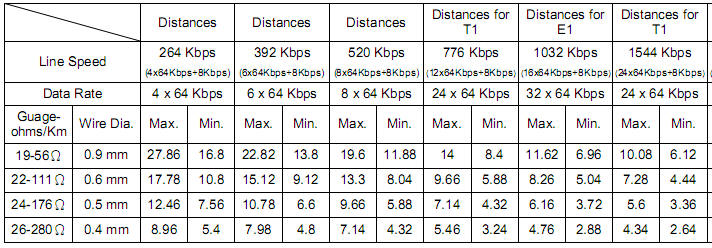
see
Manual PDF and
H-3300_Quick_Start_Guide.pdf
|